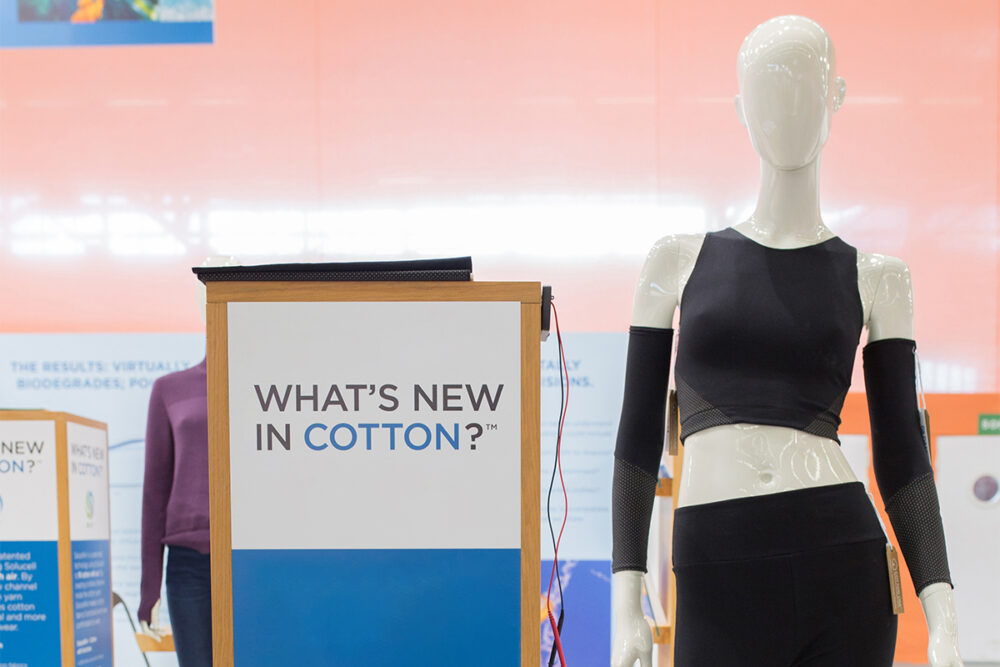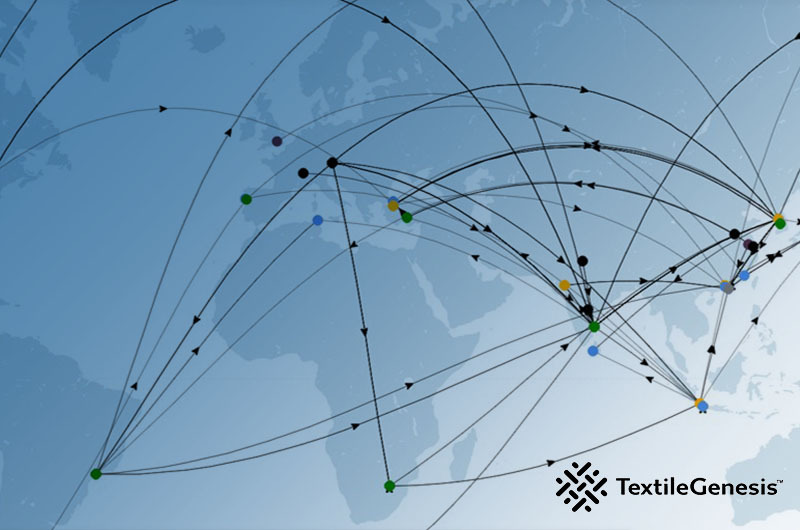The Future of Fashion is Here
From what I’ve seen at recent trade shows, what’s now possible in fashion is truly inspiring. It’s energizing to have a hub for discussion, experimentation and exploration in the fashion sector. And I’m excited by the wide array of international products, materials, and services that are pushing the boundaries of fashion, function, and innovation. Read on for my highlights.
INNOVATIVE TECHNOLOGIES
There’s nothing like a robot mannequin to remind you that the future is already here. Emineo, Euveka’s robot mannequin, is the next evolution in perfecting fit. Euveka pairs a simple and intuitive software with a biomimetic mannequin, simplifying the design process from initial sketch through production. Designed to make prototyping more efficient, a simple click will direct the form to change size. It can be controlled integrally or by zone, morphing the mannequin to the end user’s specific body proportions.
Emineo not only improves the product development process, it improves the product itself. Designers can create garments for sizes A to E with ease, reminding us that vision and innovation can make our industry more inclusive.
Another innovation that improves the consumer experience is Verisium’s customer engagement and product authentication, B2C platform for luxury brands. Verisium embeds an NFC chip into the garment and registers each product in Blockchain for anti-piracy protection. This not only helps brands protect their IP and prevent the creation and sale of knock-offs, it also creates a new way to communicate with customers in real-time. Branded content can easily be updated and pushed to the NFC chip, ultimately making the product itself a portal for brand engagement.
SMART MATERIALS
There are plenty of new smart material solutions on the way but two stick out to me: Ecotec and PYRATES. Both present expanded definitions of “smart”, challenging us as designers and consumers to think differently about how we engage with the environment.
Ecotec transforms pre-consumer clippings, like production waste from weaving and knitting companies, into new, beautiful yarns. Ecotec yarns not only reduce cost, they also reduce environmental impact. When compared to similar products made with virgin materials, Ecotec’s LCA (life cycle assessment, certified by ICEA) outperforms the status quo:
- Up to 56.3% reduction on greenhouse effect
- Up to 56.6% in energy savings
- Up to 77.9% in water consumption throughout the complete process
PYRATES also explores the connection between material innovation and the natural environment. Their PYRATEX® textiles are billed as armor against the toxic pollutants that surround us and empower consumers to better care for themselves. Available in both cosmetic and health applications, PYRATEX infuses “cocktails” of antioxidants, proteins, and amino acids into textiles to detoxify, moisturize, and revitalize skin (cosmetic), and relax the body & boost the immune system (health). Smart materials, in this case, also help build consumer awareness of environmental hazards and offer them a way to protect themselves.
In addition to introducing advanced products and materials, companies are fostering a collaboration ecosystem —building new capacity for innovation around the world.
UpTex, based in France, is a competitive cluster made up of 180 expert members from all parts of the textile industry. Its mission is to assist its members along the road to textile innovation. Connecting companies and organizations with universities and R&D institutes, UpTex works to secure strategic partnerships and funding for innovative collaborations, ultimately positioning their region as a place primed for investment and innovation.
C.L.A.S.S. (Creativity Lifestyle and Sustainable Synergy), out of Milan, is a global resource for smart material innovation that offers four ways to plug into their platform: consulting, access to a material hub, educational programs, and e-commerce. Young designers looking for resources can appreciate the e-commerce piece. The more digital solutions there are, the easier it will be for smaller businesses, start-ups, and students to access the best in material innovation.
CONCEPTUAL DESIGN
There’s always room to dream about the future and consider realities that are still works in progress. Today’s designers are using future-oriented materials to reimagine the connection between society, body, and performance. From flexible stone plating and muskin (mushroom leather), to concrete lace and polsensorfolie (visually magnetic reactive materials), many are using materials to make a statement about what we wear and how we wear it.
The future of innovation will not just center around the development of new materials, technical capabilities, and products. It will also evolve how we think about engaging with new environments, global platforms and product creation, and traditional definitions of performance. Soon we’ll see how newer considerations like artistic expression, understanding, and empathy become part of our framework for fashion.




